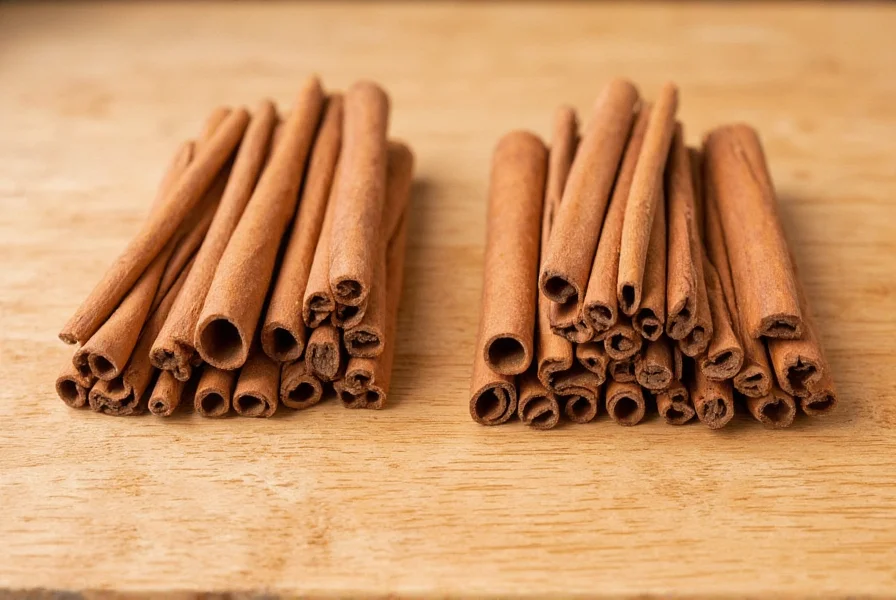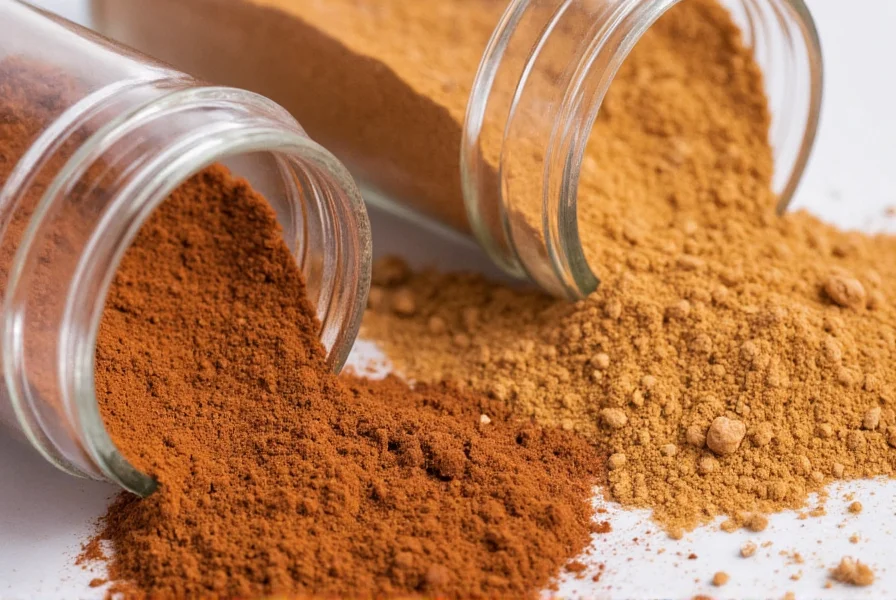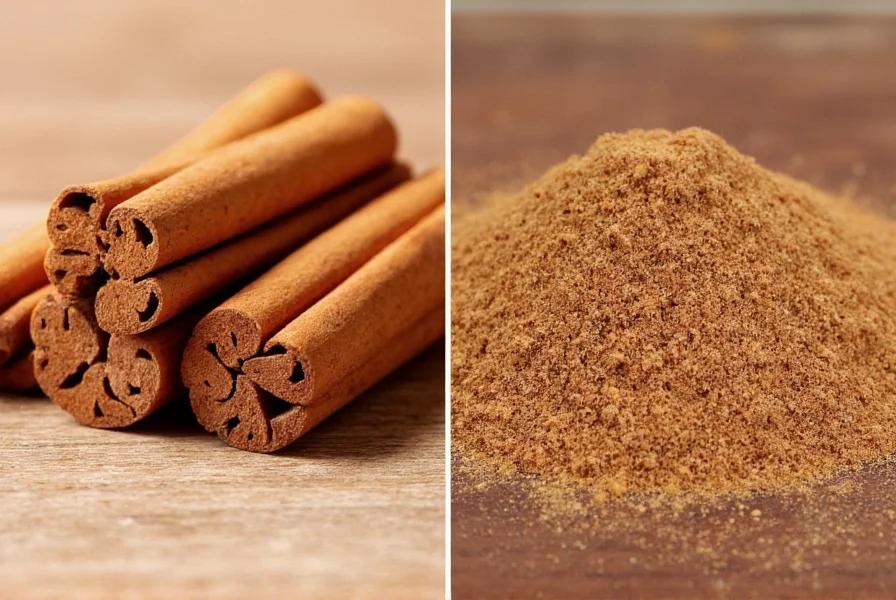When comparing ceylon cinnamon vs cassia, many consumers face confusion about which variety offers better health benefits and culinary versatility. This comprehensive guide examines the scientific, botanical, and practical differences between these two popular spices to help you make informed decisions for your kitchen and wellness routine.
Botanical Origins and Physical Characteristics
Ceylon cinnamon, often called "true cinnamon," originates from Sri Lanka and southern India. Its distinctive feature is the thin, tightly rolled quills that form multiple layers, creating a delicate, almost papery texture. When broken, Ceylon cinnamon reveals a light tan color throughout.
Cassia cinnamon, primarily grown in China, Indonesia, and Vietnam, forms thicker, single-layer quills that are harder and darker. The inside of cassia sticks shows a reddish-brown hue, while the exterior appears rougher and more rigid compared to Ceylon's fine texture.
| Characteristic | Ceylon Cinnamon | Cassia Cinnamon |
|---|---|---|
| Scientific Name | Cinnamomum verum | Cinnamomum cassia |
| Origin | Sri Lanka, India | China, Indonesia, Vietnam |
| Quill Structure | Multiple thin layers, soft | Single thick layer, hard |
| Coumarin Content | 0.017-0.114 g/kg | 2.15-6.97 g/kg |
| Flavor Profile | Mild, sweet, citrus notes | Strong, spicy, intense |
Flavor and Culinary Applications
The difference between ceylon and cassia cinnamon extends to their culinary uses. Ceylon's subtle, complex flavor with citrus undertones works exceptionally well in delicate dishes like custards, fruit salads, and light sauces where overpowering spice would be undesirable. Professional chefs often prefer Ceylon for desserts requiring nuanced spice notes.
Cassia's robust, pungent flavor stands up well to hearty dishes like stews, curries, and baked goods with strong flavors. Its intense profile makes it the dominant cinnamon variety in commercial products like cinnamon rolls, cereals, and processed foods where a bold cinnamon presence is desired.
Health Implications: The Coumarin Factor
Understanding ceylon cinnamon health benefits vs cassia requires examining coumarin content—a naturally occurring compound that can cause liver damage in high doses. Research shows cassia contains 50-250 times more coumarin than Ceylon. The European Food Safety Authority recommends a maximum daily coumarin intake of 0.1 mg per kilogram of body weight.
For a 150-pound adult, this translates to approximately:
- Ceylon: Safe for daily consumption up to several teaspoons
- Cassia: Limited to about 1 teaspoon per day for regular use
Individuals with liver conditions or those taking medications metabolized by the liver should exercise particular caution with cassia cinnamon consumption. The coumarin content in cassia cinnamon makes it less suitable for long-term therapeutic use compared to Ceylon.

Identifying Authentic Ceylon Cinnamon
Learning how to tell ceylon from cassia cinnamon prevents accidental purchase of the higher-coumarin variety. Authentic Ceylon cinnamon displays:
- Fine, papery texture that crumbles easily when bent
- Multiple thin layers forming a hollow center
- Light tan color throughout the quill
- Sweet, floral aroma rather than intense spiciness
When shopping, look for "Cinnamomum verum" or "Cinnamomum zeylanicum" on labels. Terms like "Mexican cinnamon" or "Chinese cinnamon" typically indicate cassia varieties. Premium spice retailers and specialty stores are more likely to carry genuine Ceylon cinnamon, though it typically costs 2-3 times more than cassia.
Practical Usage Recommendations
When determining which cinnamon is better for your needs, consider these guidelines:
- Daily consumption: Choose Ceylon for regular use, especially if consuming more than 1 teaspoon daily
- Baking: Use cassia for robust recipes like snickerdoodles, Ceylon for delicate pastries
- Supplementation: Opt for Ceylon if using cinnamon for potential health benefits
- Cost considerations: Cassia offers better value for occasional culinary use
The ceylon cinnamon vs cassia decision ultimately depends on your specific needs. For occasional baking where intense flavor is desired, cassia remains a practical choice. However, for regular consumption or health-focused applications, Ceylon's superior safety profile makes it worth the higher price.

Addressing Common Misconceptions
Several myths surround these cinnamon varieties. Contrary to popular belief, both types offer similar antioxidant properties and potential blood sugar regulation benefits. The primary difference lies in coumarin content, not overall health value.
Another misconception suggests Ceylon is dramatically less flavorful than cassia. While milder, Ceylon's complex flavor profile actually provides more nuanced culinary possibilities. Many professional chefs consider it superior for sophisticated applications where balanced spice notes matter.
Conclusion
Understanding the distinction between ceylon and cassia cinnamon empowers consumers to make informed choices based on their specific needs. While cassia remains the dominant commercial variety due to its lower cost and stronger flavor, Ceylon offers significant advantages for regular consumption and health-focused applications. By recognizing physical characteristics and understanding the implications of coumarin content, you can select the appropriate cinnamon variety for each culinary or wellness purpose. Whether you're a home cook, health enthusiast, or professional chef, this knowledge enhances both your kitchen experiences and wellness decisions.











 浙公网安备
33010002000092号
浙公网安备
33010002000092号 浙B2-20120091-4
浙B2-20120091-4